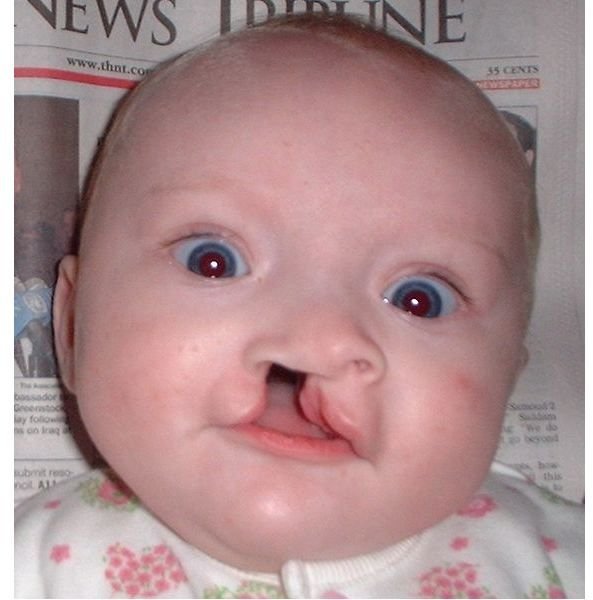Top Facts About Treacher Collins Syndrome: Arm Yourself With Knowledge
Symptoms
Children suffering from Treacher Collins syndrome are born with abnormalities in the facial and cranial structure of their bodies. One of the major facts about Treacher Collins syndrome is that these abnormalities vary depending on the individual. These features generally impact the eyes, ears, mouth or other facial bones and can be either highly disruptive to the child’s development or barely noticeable to the naked eye.
The most common features of Treacher Collins syndrome include a lack of lower eyelids, malformed or missing ears and a lack of cheek and brow bones. Many children born with a cleft palate suffer from this disease. This is caused by a failure of the skull plates to properly fuse together during development. Other more serious problems can arise in the blockage of the nasal cavity or ear canal resulting in breathing and hearing problems.
Genetics
The gene responsible for the abnormalities in children is located on chromosome 5. Specifically, it is 5q31.3-33.3, also known as gene TCOF1. Scientists have identified approximately 25 different mutations that can occur with this gene, leading to the development of Treacher Collins syndrome. Most of these mutations involve insertion or deletion, however, some are simply nonsense. This gene is the main proponent used by the body to create the treacle protein. The mutations in coding result in the treacle protein to prematurely destroy itself. This has profound effects on the overall development of the fetus while in the womb.
Embryology
Treacher Collins syndrome is a bilateral or symmetrical disorder, meaning the features that develop while the child is in the womb impact both sides of the face or skull. Due to the failure of the treacle protein to survive long enough to initiate proper craniofacial creation, a fetus grows without certain features fully integrated. In its root inception, the neural crest cells which are responsible for the cartilage and bone development during the fetal stage fail to migrate to the branchial arches which develop into organs and structures of the face. These arches are located on both sides of the head. Generally, this occurs between the sixth and seventh week of development.
Diagnosis and Therapy
The majority of cases of Treacher Collins are diagnosed simply by visual observations. Due to the severity of some of the symptoms, doctors can identify children with the syndrome in the womb using ultrasound or after birth. In modern times, genetic tests conducted during the fetal stage can usually identify the prevalence of mutations in the TCOF1 gene. Additional tests using CT scans, MRI machines or X-rays can give physicians a better understanding of the level of impact the disease has on individuals.
There are very few therapeutic treatments for Treacher Collins syndrome. Since it is a genetic disorder, the disease cannot be prevented or cured and simply must be handled using conventional science. Most children are given facial reconstruction surgery to limit the overall effects of the disease. This is usually highly successful, especially in cases in which simple deformities are the main issue.
Inheritance and Mutations
Treacher Collins syndrome is either inherited from a parent or simply spontaneously develops. The gene that causes the disease is dominant and therefore is passed from parent to child 50 percent of the time. However, about 60 percent of all cases worldwide are caused by simple mutations that naturally occur in human DNA. Facts about Treacher Collins syndrome show that roughly one in 40,000 children are impacted, although some statistics put that figure higher. Those who inherit the disorder can usually trace the disease back generations, although some appear to be new developments since the symptoms of the parent are relatively minor. There is no way of telling how elaborate the symptoms will be based on the features of the parent.
References
“Mandibulofacial Dysostosis” eMedicine: https://emedicine.medscape.com/article/946143-overview
“Treacher Collins Syndrome” New York Times: https://health.nytimes.com/health/guides/disease/treacher-collins-syndrome/overview.html
Image Source
Cleft Palate. (Supplied by king97tut at Wikimedia Commons; Public Domain; https://upload.wikimedia.org/wikipedia/commons/2/2f/13900470_3PREOPERATION0.jpg)
This post is part of the series: Facts About Treacher Collins Syndrome
Treacher Collins syndrome is a genetic condition caused by mutations to the TCOF1 gene found on chromosome 5. Treatment methods such as corrective surgery and education can aid children born with problems such as facial and cranial malformations.
